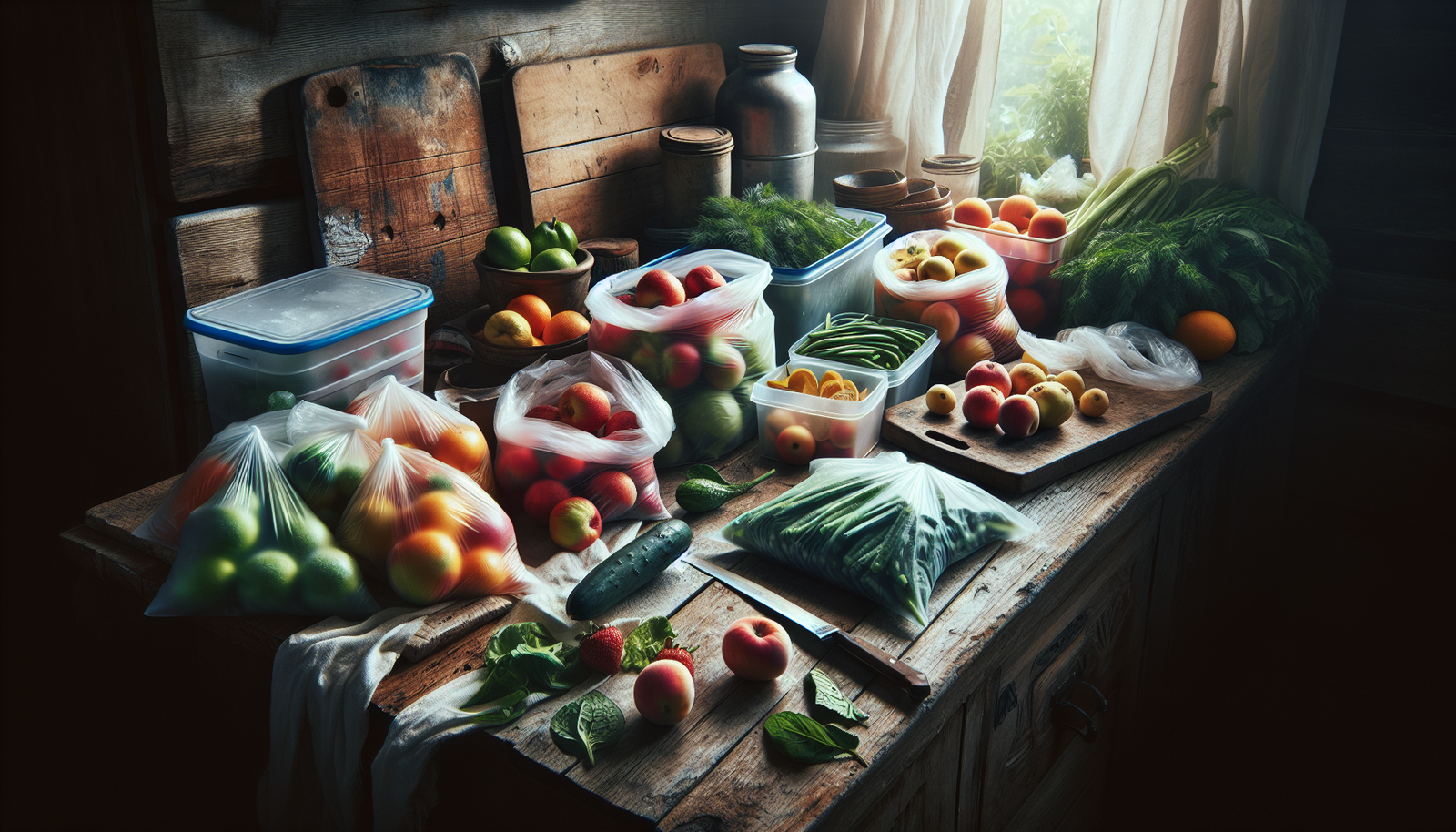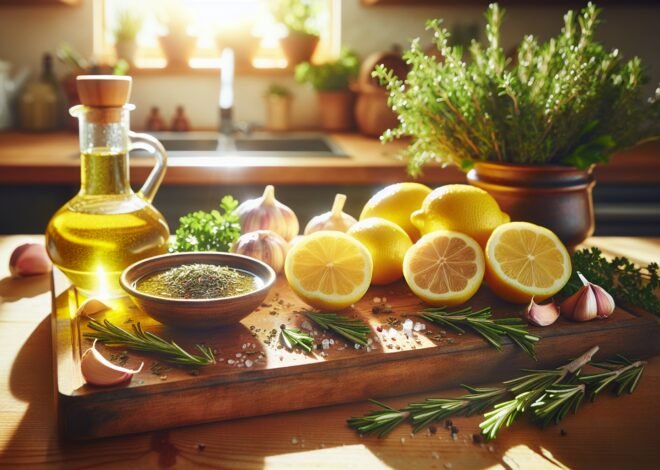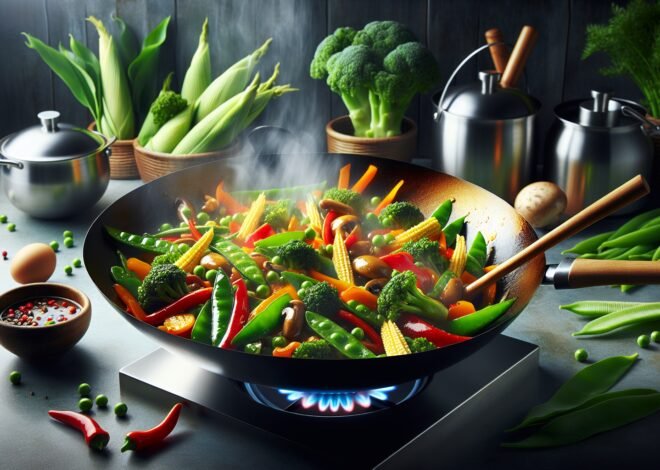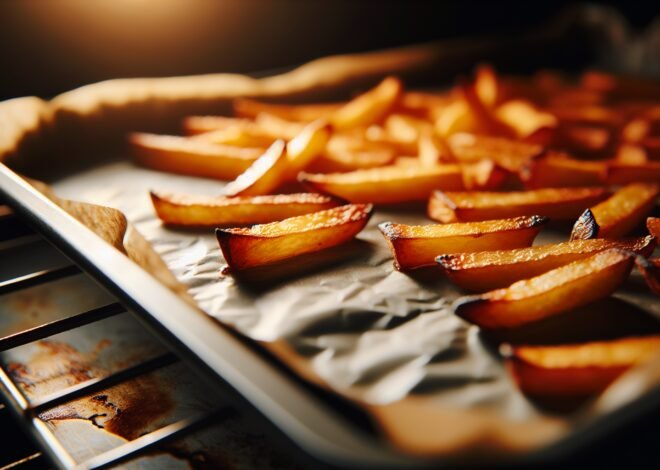
How to Freeze Fruits and Vegetables for Future Use
Freezing fruits and vegetables is a fantastic way to preserve their nutrients and flavors for later use. This guide will walk you through the best methods to freeze various fruits and veggies, ensuring they maintain their quality and can be enjoyed anytime.
Why Freezing Fruits and Vegetables is Useful
Freezing is a fantastic way to preserve the bounty of your garden or a bulk purchase from the market. It locks in nutrients and flavor, ensuring that you enjoy the taste and health benefits of fresh produce year-round. Let’s delve into why freezing is an excellent choice for keeping fruits and vegetables at their best.
Preserving Nutrients and Flavor
Freezing fruits and vegetables effectively retains their nutritional value. Unlike other preservation methods, freezing slows down the enzyme activity that causes food degradation. Vitamins, minerals, and antioxidants remain intact, offering nearly the same health benefits as fresh produce. Moreover, freezing captures the peak flavor of your fruits and vegetables, providing a taste burst whenever you thaw them.
Studies show that frozen fruits and vegetables can be as nutritious as fresh ones. This is because they’re usually frozen shortly after harvesting, preserving their nutrient content. Fresh produce, on the other hand, loses nutrients over time during transportation and storage.
To maximize nutrition and taste, freeze your produce at its peak ripeness. This ensures that you’re preserving the best possible flavor and health benefits for later enjoyment.
Preventing Freezer Burn in Produce
Freezer burn is a common issue when freezing produce. It occurs when air reaches the food’s surface, causing dehydration and oxidation. This results in dry spots and a decline in flavor and texture. However, preventing freezer burn is simple with the right techniques.
Proper packaging is key. Use airtight containers or freezer bags designed to keep air out. Remove as much air as possible from the bag before sealing it. Vacuum sealing is a great option for longer storage. Additionally, maintaining a consistent freezer temperature helps prevent temperature fluctuations that can contribute to freezer burn.
Common Freezing Mistakes
Freezing fruits and vegetables may seem straightforward, but several pitfalls can affect the final result. Avoid these common mistakes to ensure your produce stays fresh and flavorful:
- Skipping the Blanching Process: Many vegetables require blanching before freezing to stop enzyme actions that cause loss of flavor, color, and texture.
- Poor Packaging: Use appropriate containers or bags to prevent air exposure and freezer burn.
- Overloading the Freezer: Allow space for air circulation to maintain a consistent temperature and efficient freezing.
- Not Labeling: Clearly label and date all packages to track storage times and ensure you use older items first.
Best Practices for Freezing Fruits and Vegetables
Mastering the art of freezing fruits and vegetables involves a few best practices. These techniques help maintain quality, enhance flavor, and extend shelf life. By following these steps, you’ll enjoy delicious and nutritious produce all year long.
Blanching Vegetables Before Freezing
Blanching is a crucial step before freezing vegetables. This process involves briefly boiling vegetables, then plunging them into ice water. Blanching halts enzyme activity, preserves color, texture, and flavor, and kills bacteria.
Here’s how to blanch vegetables effectively:
- Bring a large pot of water to a boil.
- Prepare an ice bath in a bowl large enough to hold the vegetables.
- Submerge the vegetables in boiling water for a few minutes.
- Quickly transfer them to the ice bath to stop cooking.
- Drain and dry thoroughly before freezing.
How to Freeze Fruits Without Clumping
Clumping is a common issue when freezing fruits. To prevent this, use the tray freezing method. Arrange fruit pieces in a single layer on a baking sheet, then freeze until solid. Once frozen, transfer them to airtight containers or bags for long-term storage. This technique ensures individual pieces remain separate, making it easier to measure desired amounts when needed.
Labeling and Organizing Frozen Produce
Organizing your freezer is crucial for easy access and management of frozen produce. Clearly label each package with the name of the fruit or vegetable and the date it was frozen. Use a permanent marker to ensure labels remain legible.
Organize your freezer by grouping similar items together. This strategy not only saves time when searching for specific produce but also helps rotate stock. By using older items first, you can minimize waste and always have fresh options on hand.
Thawing Fruits and Vegetables
Thawing frozen fruits and vegetables properly is as important as freezing them. Incorrect methods can lead to mushy textures and flavor loss. Understanding the best practices for thawing ensures you make the most of your frozen produce in various dishes.
When and How to Thaw Frozen Produce
Thawing depends on the type of produce and its intended use. Generally, fruits and vegetables should be thawed slowly in the refrigerator to maintain texture and flavor. For quicker results, use cold water or microwave methods, but be cautious to avoid cooking them.
Fruits often require no thawing when used in recipes like smoothies, where texture isn’t a concern. Vegetables, however, benefit from a gentle thawing process to ensure they retain their original texture when cooked.
Using Frozen Fruits in Smoothies and Desserts
Frozen fruits are perfect for smoothies and desserts, offering convenience and a nutritional boost. They add a thick, creamy texture to smoothies, eliminating the need for ice. In desserts, frozen fruits can be used straight from the freezer or thawed slightly, depending on the recipe.
For smoothies, use a combination of your favorite fruits, some yogurt, and a liquid base. Blend until smooth for a refreshing treat that’s packed with vitamins and minerals.
Cooking with Frozen Vegetables
Frozen vegetables are versatile and easy to incorporate into meals. They’re perfect for stir-fries, soups, and casseroles, providing a quick and healthy addition to any dish. Cook them directly from frozen to preserve their texture and taste.
To avoid soggy vegetables, use high-heat cooking methods like sautéing or roasting. These techniques help maintain the vegetables’ crispness and flavor, ensuring a delicious result every time.
Conclusion
Freezing fruits and vegetables is a convenient way to preserve their freshness and nutrients for future use. By following these freezing techniques, you can ensure that your produce stays vibrant and flavorful. Whether you’re freezing berries or blanching vegetables, proper storage will allow you to enjoy the benefits of fresh produce all year long.
FAQ
How should I prepare fruits and vegetables for freezing?
Wash fruits and vegetables thoroughly under running water. Peel and chop them into desired sizes. For fruits, consider soaking in a mild solution of lemon juice and water to prevent browning. Pack them in airtight containers or freezer bags to maintain freshness.
Do I need to blanch vegetables before freezing?
Blanching is essential for most vegetables before freezing. It stops enzyme actions that can lead to loss of flavor, color, and texture. Immerse vegetables in boiling water for a few minutes, then cool them rapidly in ice water before freezing.
What’s the best way to freeze fruits without clumping?
To prevent fruits from sticking together, spread them in a single layer on a baking sheet. Place them in the freezer until they’re firm. Once frozen, transfer the fruits to freezer bags or containers for space-efficient storage.
How long do frozen fruits and vegetables last?
Frozen fruits can last up to a year when stored properly. Vegetables generally maintain their quality for 8 to 12 months. Label containers with dates to keep track of their freshness.
Can I freeze all types of vegetables?
Most vegetables freeze well, but some lose their texture. Leafy greens, peppers, and peas are excellent choices for freezing. Vegetables with high water content like lettuce and cucumbers don’t freeze well as they become mushy.
How should I thaw frozen produce?
Thaw frozen produce in the refrigerator for even defrosting. For quicker thawing, immerse sealed bags in cold water. Avoid thawing at room temperature to prevent bacterial growth. Cook vegetables directly from frozen for best results.











